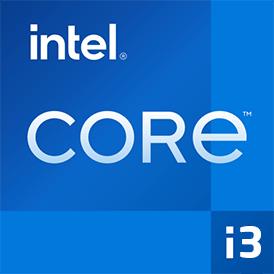 Geekbench 3, 64bit (Multi-Core)
Geekbench 3, 64bit (Multi-Core)
|
|
Intel Core i3-4030U
2C 4T @ 1.9 GHz
|
3767
|
|
|
AMD E1-6010
2C 2T @ 1.35 GHz
|
1134
|
 Estimated results for PassMark CPU Mark
Estimated results for PassMark CPU Mark
|
|
Intel Core i3-4030U
2C 4T @ 1.9 GHz
|
1940
|
|
|
AMD E1-6010
2C 2T @ 1.35 GHz
|
885
|
 Geekbench 3, 64bit (Single-Core)
Geekbench 3, 64bit (Single-Core)
|
|
Intel Core i3-4030U
2C 4T @ 1.9 GHz
|
1790
|
|
|
AMD E1-6010
2C 2T @ 1.35 GHz
|
698
|
 Geekbench 5, 64bit (Multi-Core)
Geekbench 5, 64bit (Multi-Core)
|
|
Intel Core i3-4030U
2C 4T @ 1.9 GHz
|
1040
|
|
|
AMD E1-6010
2C 2T @ 1.35 GHz
|
261
|
 CPU-Z Benchmark 17 (Multi-Core)
CPU-Z Benchmark 17 (Multi-Core)
|
|
Intel Core i3-4030U
2C 4T @ 1.9 GHz
|
509
|
|
|
AMD E1-6010
2C 2T @ 1.35 GHz
|
147
|
 Geekbench 5, 64bit (Single-Core)
Geekbench 5, 64bit (Single-Core)
|
|
Intel Core i3-4030U
2C 4T @ 1.9 GHz
|
449
|
|
|
AMD E1-6010
2C 2T @ 1.35 GHz
|
143
|
 Cinebench R15 (Multi-Core)
Cinebench R15 (Multi-Core)
|
|
Intel Core i3-4030U
2C 4T @ 1.9 GHz
|
191
|
|
|
AMD E1-6010
2C 2T @ 1.35 GHz
|
45
|
 Cinebench R15 (Single-Core)
Cinebench R15 (Single-Core)
|
|
Intel Core i3-4030U
2C 4T @ 1.9 GHz
|
65
|
|
|
AMD E1-6010
2C 2T @ 1.35 GHz
|
27
|
 Cinebench R11.5, 64bit (Multi-Core)
Cinebench R11.5, 64bit (Multi-Core)
|
|
Intel Core i3-4030U
2C 4T @ 1.9 GHz
|
2.0
|
|
|
AMD E1-6010
2C 2T @ 1.35 GHz
|
0.6
|
 Cinebench R11.5, 64bit (Single-Core)
Cinebench R11.5, 64bit (Single-Core)
|
|
Intel Core i3-4030U
2C 4T @ 1.9 GHz
|
0.8
|
|
|
AMD E1-6010
2C 2T @ 1.35 GHz
|
0.3
|

